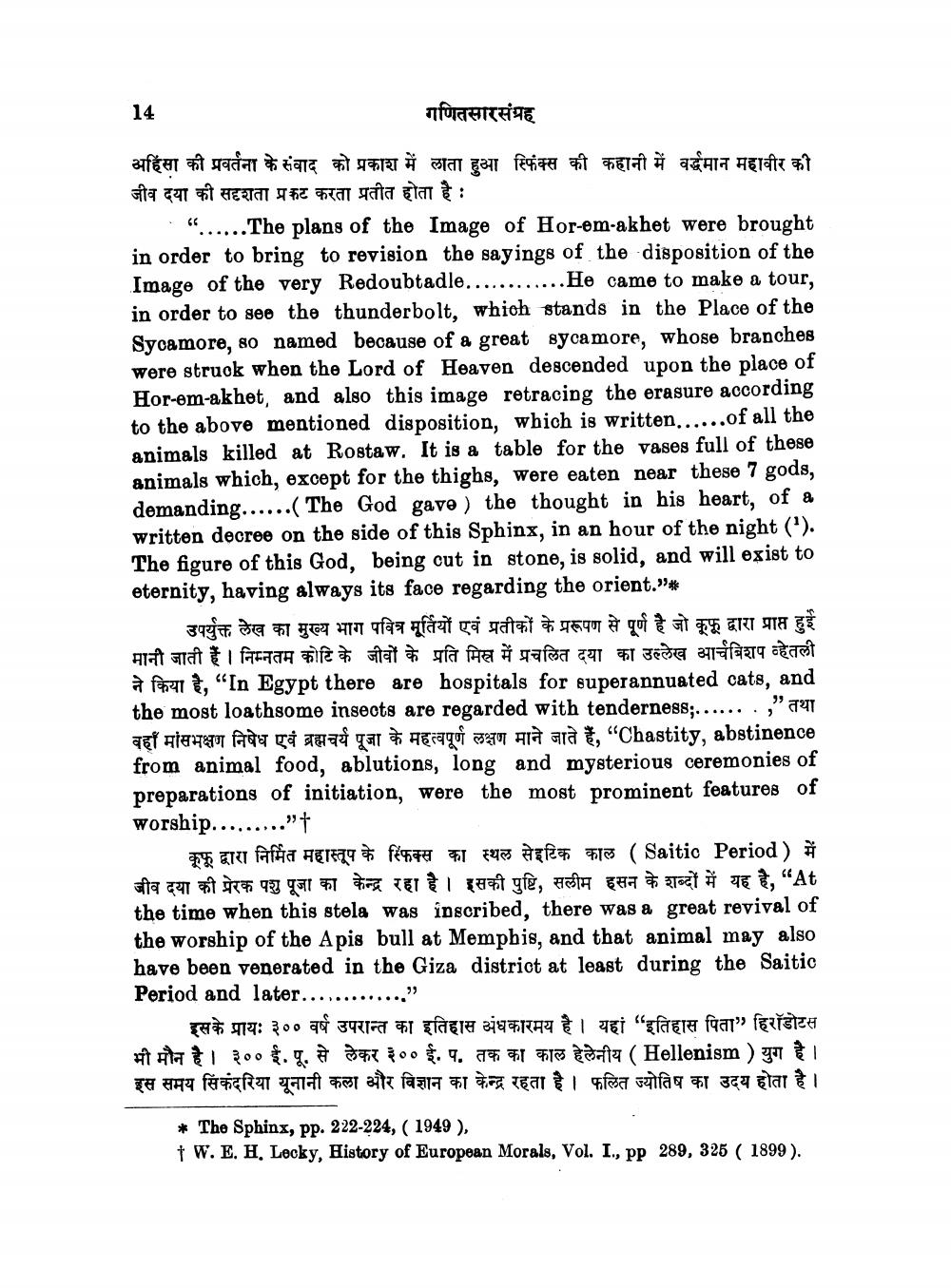________________
14
गणितसारसंग्रह
अहिंसा की प्रवर्तना के संवाद को प्रकाश में लाता हुआ स्फिंक्स की कहानी में वर्द्धमान महावीर की जीव दया की सदृशता प्रकट करता प्रतीत होता है:
- "......The plans of the Image of Hor-em-akhet were brought in order to bring to revision the sayings of the disposition of the Image of the very Redoubtadle............He came to make a tour, in order to see the thunderbolt, which stands in the Place of the Sycamore, so named because of a great sycamore, whose branches were struok when the Lord of Heaven descended upon the place of Hor-em-akhet, and also this image retracing the erasure according to the above mentioned disposition, which is written......of all the animals killed at Rostaw. It is a table for the vases full of these animals which, except for the thighs, were eaten near these 7 gods, demanding......( The God gave) the thought in his heart, of a written decree on the side of this Sphinx, in an hour of the night ("). The figure of this God, being cut in stone, is solid, and will exist to eternity, having always its face regarding the orient."*
उपर्युक्त लेख का मुख्य भाग पवित्र मूर्तियों एवं प्रतीकों के प्ररूपण से पूर्ण है जो कूफू द्वारा प्राप्त हुई मानी जाती हैं । निम्नतम कोटि के जीवों के प्रति मिस्र में प्रचलित दया का उल्लेख आर्चबिशप व्हेतली ने किया है, “In Egypt there are hospitals for superannuated cats, and the most loathsome insects are regarded with tenderness;...... . ," तथा वहाँ मांसभक्षण निषेध एवं ब्रह्मचर्य पूजा के महत्वपूर्ण लक्षण माने जाते हैं, "Chastity, abstinence from animal food, ablutions, long and mysterious ceremonies of preparations of initiation, were the most prominent features of worship........."
कुफू द्वारा निर्मित महास्तूप के स्फिक्स का स्थल सेइटिक काल ( Saitic Period) में जीव दया की प्रेरक पशु पूजा का केन्द्र रहा है। इसकी पुष्टि, सलीम हसन के शब्दों में यह है, "At the time when this stela was inscribed, there was a great revival of the worship of the A pis bull at Memphis, and that animal may also have been venerated in the Giza district at least during the Saitic Period and later............."
इसके प्रायः ३०० वर्ष उपरान्त का इतिहास अंधकारमय है। यहां "इतिहास पिता" हिरॉडोटस भी मौन है। ३०० ई.पू. से लेकर ३०० ई. प. तक का काल हेलेनीय ( Hellenism) युग है। इस समय सिकंदरिया यूनानी कला और विज्ञान का केन्द्र रहता है। फलित ज्योतिष का उदय होता है।
* The Sphinx, pp. 222-224, (1949), † W. E. H. Lecky, History of European Morals, Vol. I., pp 289, 325 ( 1899).




